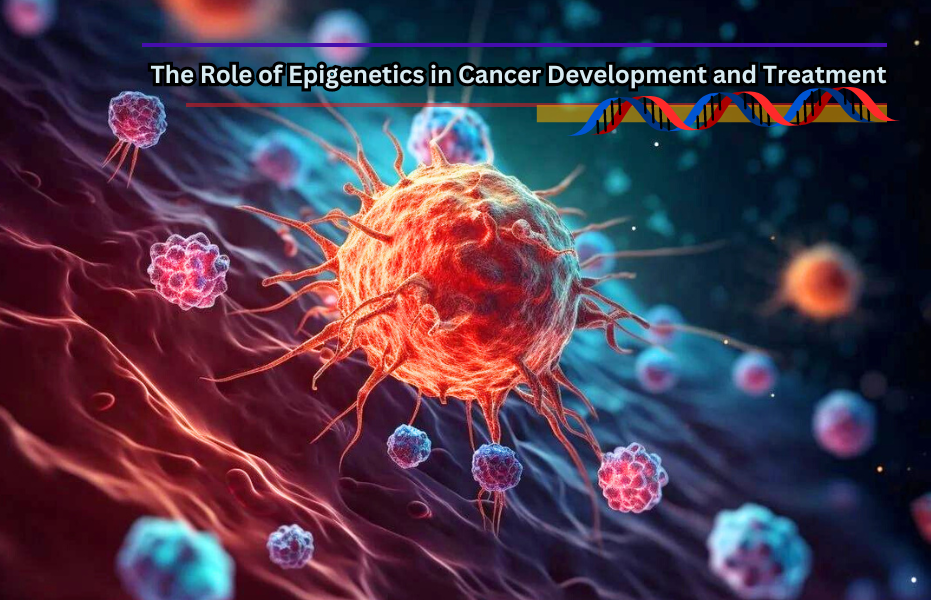BLOG
The Role of Epigenetics in Cancer Development and Treatment

Cancer remains one of the most formidable challenges in modern medicine. While significant strides have been made in understanding its genetic foundations, another crucial layer of complexity has emerged: epigenetics. This fascinating field explores how gene expression is regulated by mechanisms other than changes to the DNA sequence itself. In this blog, we will delve into the role of epigenetics in cancer development and treatment, highlighting its potential to revolutionize oncology.
Understanding Epigenetics
Epigenetics refers to heritable changes in gene expression that do not involve alterations to the underlying DNA sequence. These changes can affect how cells read genes, leading to variations in gene activity and protein production. The primary mechanisms of epigenetic regulation include DNA methylation, histone modification, and non-coding RNAs.
DNA Methylation
DNA methylation involves the addition of a methyl group to the DNA molecule, typically at cytosine bases in CpG islands. This modification can silence genes by preventing the binding of transcription factors or recruiting proteins that compact the chromatin structure, making it inaccessible for transcription.
Histone Modification
Histones are proteins around which DNA is wrapped, forming a complex called chromatin. Chemical modifications of histones, such as acetylation, methylation, and phosphorylation, can influence chromatin structure and gene expression. For instance, acetylation of histones generally relaxes chromatin, facilitating gene transcription, while methylation can either activate or repress gene expression depending on the specific amino acid residues involved.
Non-coding RNAs
Non-coding RNAs, including microRNAs (miRNAs) and long non-coding RNAs (lncRNAs), play critical roles in regulating gene expression. These molecules can modulate gene activity by degrading mRNA, inhibiting translation, or altering chromatin states.
Epigenetics and Cancer Development
The interplay between epigenetic modifications and cancer is profound. Aberrant epigenetic changes can disrupt normal gene function and cellular processes, leading to uncontrolled cell proliferation, evasion of apoptosis, and other hallmarks of cancer.
DNA Methylation in Cancer
In cancer, abnormal DNA methylation patterns are common. Hypermethylation of tumor suppressor genes can lead to their silencing, while hypomethylation of oncogenes can result in their overexpression. For example, hypermethylation of the promoter region of the p16INK4a gene, a key tumor suppressor, is frequently observed in various cancers, leading to its inactivation and subsequent uncontrolled cell cycle progression.
Histone Modification in Cancer
Dysregulation of histone modifications also contributes to cancer development. Changes in histone acetylation and methylation patterns can alter chromatin structure and gene expression profiles. For instance, reduced acetylation of histones H3 and H4 is associated with gene silencing in cancer, affecting genes involved in cell cycle regulation and apoptosis.
Non-coding RNAs in Cancer
Non-coding RNAs are increasingly recognized as critical players in cancer biology. miRNAs can function as oncogenes or tumor suppressors, depending on their target genes. Dysregulation of miRNA expression can promote cancer by influencing processes like cell proliferation, apoptosis, and metastasis. For example, overexpression of miR-21 is linked to the suppression of tumor suppressor genes and enhanced cancer cell survival.
Epigenetic Therapies in Cancer Treatment
Given the reversible nature of epigenetic modifications, they present attractive targets for cancer therapy. Epigenetic therapies aim to correct abnormal gene expression patterns and restore normal cellular function.
DNA Methylation Inhibitors
DNA methylation inhibitors, such as 5-azacytidine and decitabine, are used to treat certain hematologic malignancies. These drugs incorporate into DNA and inhibit DNA methyltransferases, leading to demethylation and reactivation of silenced tumor suppressor genes.
Histone Deacetylase Inhibitors
Histone deacetylase (HDAC) inhibitors, including vorinostat and romidepsin, are another class of epigenetic drugs approved for cancer treatment. HDAC inhibitors promote the acetylation of histones, resulting in a more open chromatin structure and increased gene expression. These agents can induce cancer cell differentiation, apoptosis, and cell cycle arrest.
Emerging Epigenetic Therapies
Research is ongoing to develop novel epigenetic therapies. Bromodomain and extra-terminal (BET) inhibitors, which target proteins involved in recognizing acetylated histones, show promise in preclinical studies. Additionally, inhibitors of histone methyltransferases and demethylases are being explored for their potential to modulate gene expression in cancer.
Challenges and Future Directions
While epigenetic therapies hold great promise, several challenges remain. One major obstacle is the potential for off-target effects, given the widespread roles of epigenetic regulators in normal cellular functions. Additionally, the heterogeneity of cancer and the dynamic nature of the epigenome complicate the development of targeted therapies.
Future research aims to refine these therapies and identify biomarkers for patient stratification and treatment response. Combining epigenetic therapies with other treatment modalities, such as immunotherapy and targeted therapies, may enhance their efficacy and overcome resistance mechanisms.
Conclusion
Epigenetics offers a powerful lens through which to understand cancer development and uncover novel therapeutic avenues. By elucidating the complex regulatory networks governing gene expression, scientists are paving the way for more precise and effective cancer treatments. As research progresses, the integration of epigenetics into oncology promises to transform cancer care, offering hope for improved outcomes and a future where cancer is more manageable and potentially curable.More

